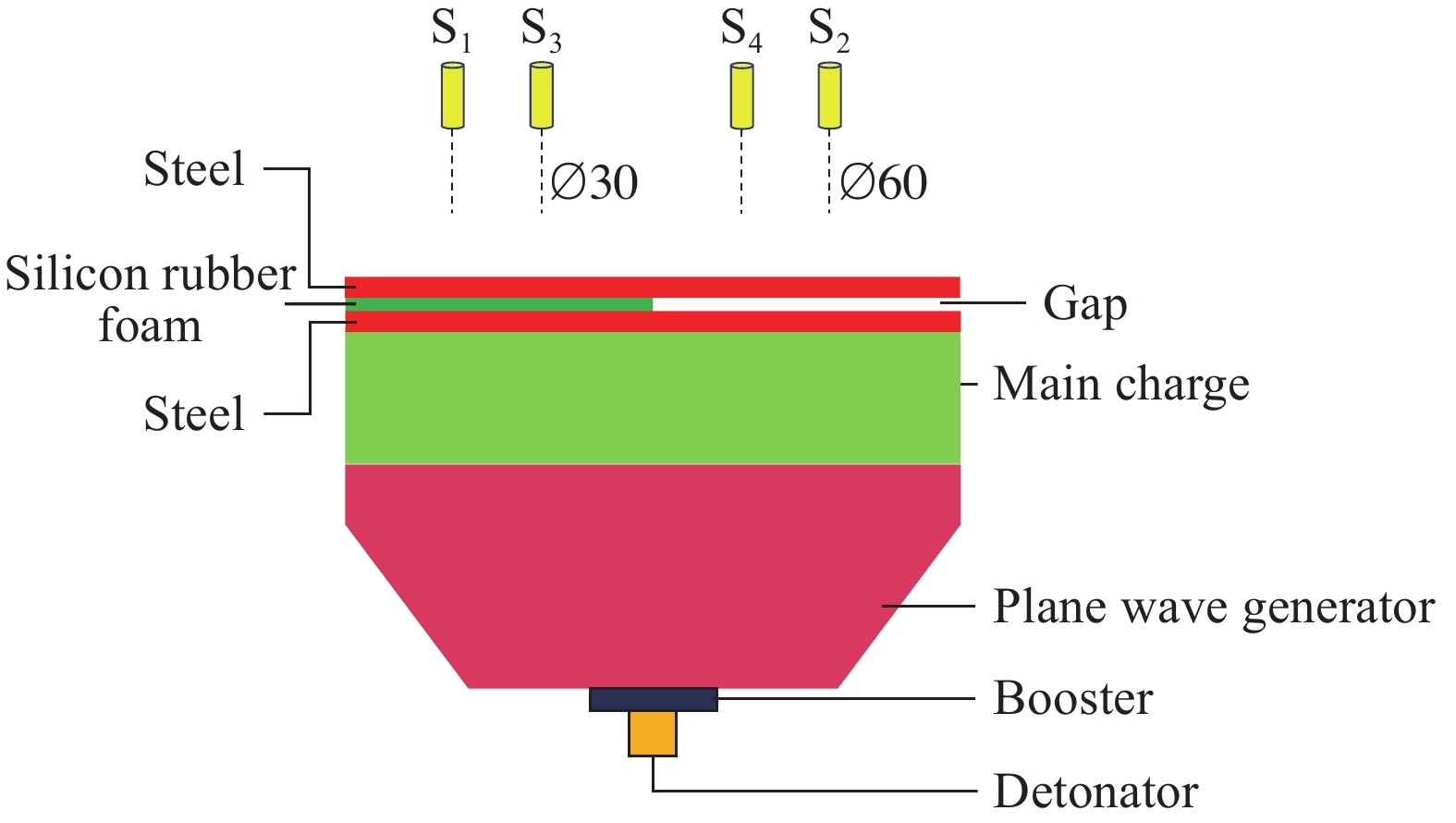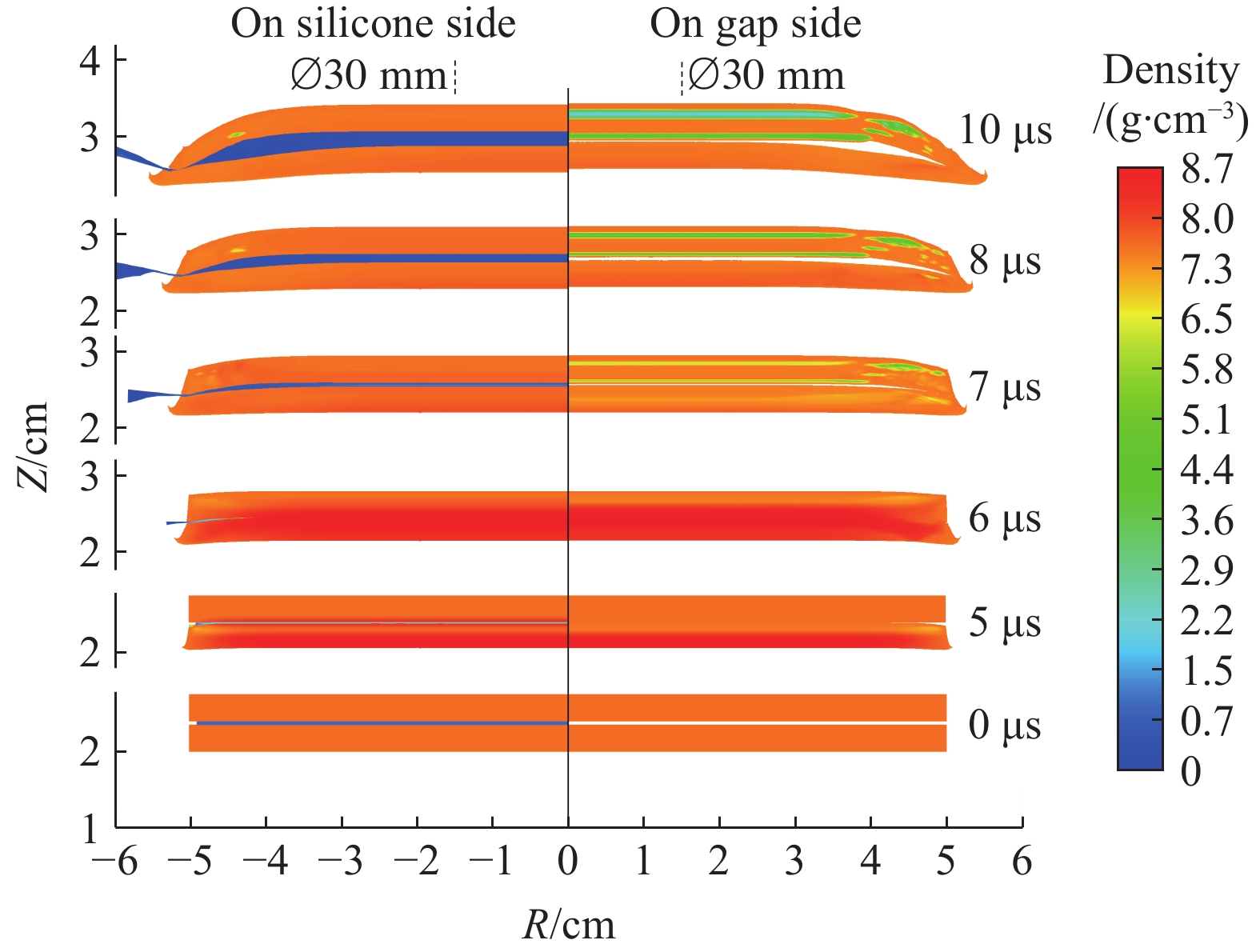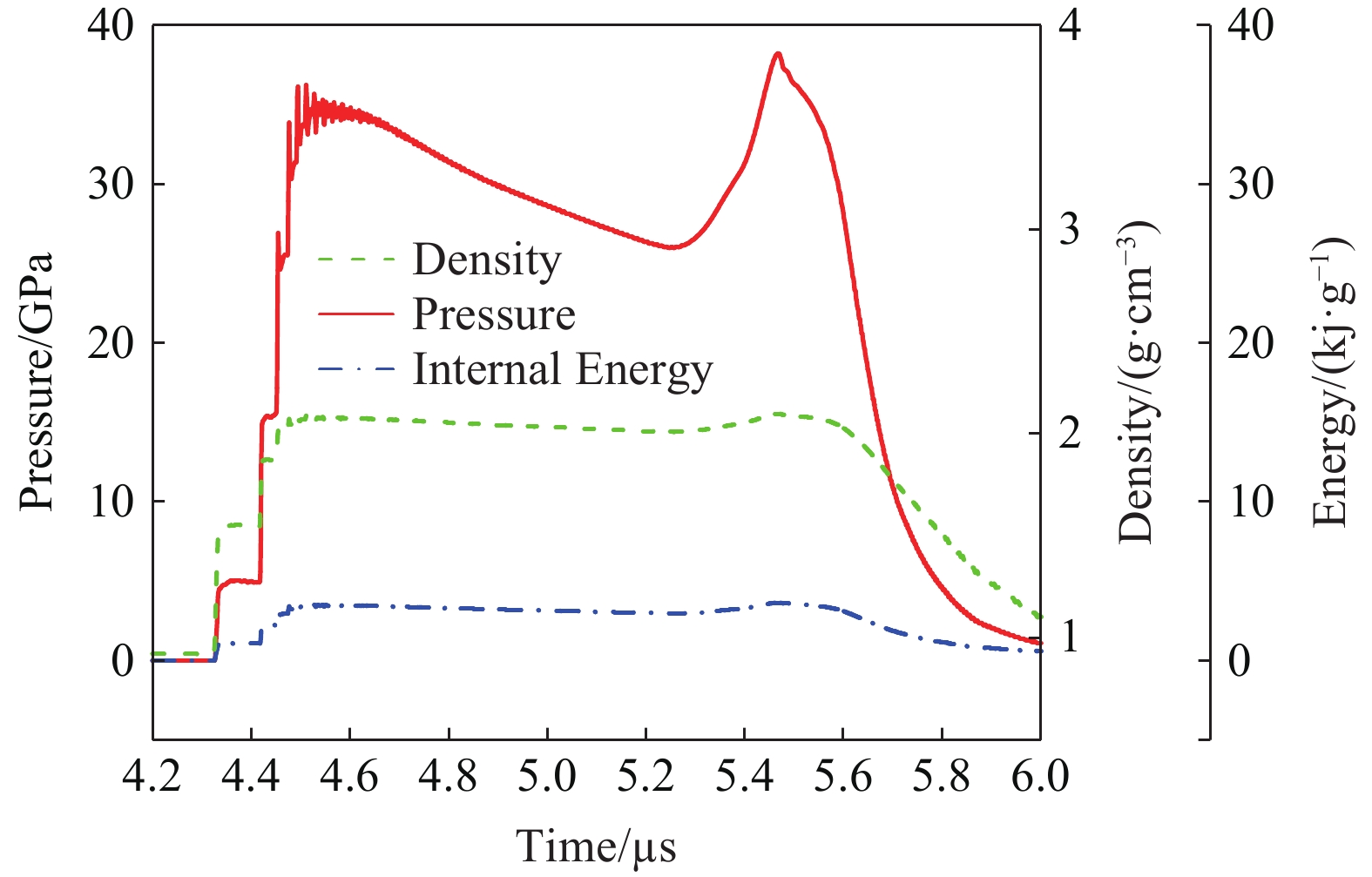| [1] |
LANDROCK A H. Handbook of plastic foams: types, properties, manufacture and applications [M]. Park Ridge: Noyes Publications, 1995.
|
| [2] |
MAITI A, WEISGRABER T H, GEE R H. Modeling the mechanical and aging properties of silicone rubber and foam-stockpile-historical & additively manufactured materials: LLNL-TR-661699 [R]. Livermore: LLNL, 2014.
|
| [3] |
SANBORN B, SONG B, SMITH S. Pre-strain effect on frequency-based impact energy dissipation through a silicone foam pad for shock mitigation [J]. Journal of Dynamic Behavior of Materials, 2016, 2(1): 138–145. DOI: 10.1007/s40870-015-0043-1. |
| [4] |
DOWELL F. Simple EOS for the silicone rubber Sylgard 184: LA-10164-MS [R]. United States: Los Alamos National Lab, 1984.
|
| [5] |
CARTER W J, MARSH S P. Hugoniot equation of state of polymers: LA-13006-MS [R]. USA: Los Alamos National Lab, 1995.
|
| [6] |
KONDO K, YASUMOTO Y, SUGIURA H, et al. Multiple shock reverberations in a layer structure observed by particle-velocity and pressure gauges [J]. Journal of Applied Physics, 1981, 52(2): 772–776. DOI: 10.1063/1.328761. |
| [7] |
WINTER R E, WHITEMAN G, HAINING G S, et al. Measurement of equation of state of silicone elastomer [J]. AIP Conference Proceedings, 2004, 706(1): 679–684.
|
| [8] |
DATTELBAUM D M, JENSEN J D, SCHWENDT A M, et al. A novel method for static equation-of state-development: Equation of state of a cross-linked poly(dimethylsiloxane) (PDMS) network to 10 GPa [J]. The Journal of Chemical Physics, 2005, 122(14): 144903. DOI: 10.1063/1.1879872. |
| [9] |
ZENG J R, LIUY, DU B G, et al. Measurement of shock-Hugoniot curve of low-density silastic [J]. Chinese Journal of High Pressure Physics, 1996, 10(4): 299–303. DOI: 10.11858/gywlxb.1996.04.010. |
| [10] |
WANG Q S. Calculation of the Hugoniot of silicon rubber foam [J]. Chinese Journal of High Pressure Physics, 2010, 24(2): 120–124. DOI: 10.11858/gywlxb.2010.02.007. |
| [11] |
LI X Z, WU Q, ZHANG H Z, et al. Study on the shock compression of foam silicon rubber [J]. Chinese Journal of High Pressure Physics, 1998, 12(4): 291–297. DOI: 10.11858/gywlxb.1998.04.008. |
| [12] |
MORRIS C E, FRITZ J N, MCQUEEN R G. The equation of state of polytetrafluoroethylene to 80 GPa [J]. The Journal of Chemical Physics, 1984, 80(10): 5203–5218. DOI: 10.1063/1.446591. |
| [13] |
DATTELBAUM D M, COE J D, RIGG P A, et al. Shockwave response of two carbon fiber-polymer composites to 50 GPa [J]. Journal of Applied Physics, 2014, 116: 194308. DOI: 10.1063/1.4898313. |
| [14] |
KERLEY G I. Equation of state and constitutive models for numerical simulations of dust impacts on the solar probe: KTS09-1 [R]. Maryland: Johns Hopkins University Applied Physics Laboratory, 2013.
|
| [15] |
HAMDANI S, LONGUET C, PERRIN D, et al. Flame retardancy of silicone-based materials [J]. Polymer Degradation and Stability, 2009, 94(4): 465–495. DOI: 10.1016/j.polymdegradstab.2008.11.019. |
| [16] |
GRASSIE N, MACFARLANE I G. The thermal degradation of polysiloxanes- I. Poly(dimethylsiloxane) [J]. European Polymer Journal, 1978, 14(11): 875–884. DOI: 10.1016/0014-3057(78)90084-8. |
| [17] |
CAMINO G, LOMAKIN S M, LAZZARI M. Polydimethylsiloxane thermal degradation Part 1. Kinetic aspects [J]. Polymer, 2001, 42(6): 2395–2402. DOI: 10.1016/S0032-3861(00)00652-2. |
| [18] |
CAMINO G, LOMAKIN S M, LAGEARD M. Thermal polydimethylsiloxane degradation. Part 2. The degradation mechanisms [J]. Polymer, 2002, 43(7): 2011–2015. DOI: 10.1016/S0032-3861(01)00785-6. |
| [19] |
JOVANOVIC J D, GOVEDARICA M N, DVORNIC P R, et al. The thermogravimetric analysis of some polysiloxanes [J]. Polymer Degradation and Stability, 1998, 61(1): 87–93. DOI: 10.1016/S0141-3910(97)00135-3. |
| [20] |
RADHAKRISHNAN T S. New method for evaluation of kinetic parameters and mechanism of degradation from pyrolysis-GC studies: thermal degradation of polydimethylsiloxanes [J]. Journal of Applied Polymer Science, 1999, 73(3): 441–450. DOI: 10.1002/(SICI)1097-4628(19990718)73:3<441::AID-APP16>3.0.CO;2-J.
|
| [21] |
HAYASHIDA K, TSUGE S, OHTANI H. Flame retardant mechanism of polydimethylsiloxane material containing platinum compound studied by analytical pyrolysis techniques and alkaline hydrolysis gas chromatography [J]. Polymer, 2003, 44(19): 5611–5616. DOI: 10.1016/S0032-3861(03)00622-0. |
| [22] |
LI T, LIU M T, WANG X Y, et al. Effects of explosive device with foam cushion and air clearance on kinetic characteristic of steel flyer under detonation loading [J]. Chinese Journal of High Pressure Physics, 2018, 32(4): 044202. DOI: 10.11858/gywlxb.20170576. |
| [23] |
LIU J, SUN Z Y, ZHANG F G, et al. Simulation analysis of the effect of clearance on motion characteristic of metal flyer under detonation loading [J]. Explosion and Shock Waves, 2023, 43(4): 042201. DOI: 10.11883/bzycj-2022-0239. |
| [24] |
WHIRLEY R G, ENGELMANN B E. DYNA2D: A nonlinear, explicit, two-dimensional finite element code for solid mechanics: User manual: UCRL-MA-110630 [R]. USA: Lawrence Livermore National Lab. , 1992.
|
| [25] |
孙承纬. 炸药平面波透镜的有效药量 [C]//爆轰研究论文集(第3卷). 绵阳: 中国工程物理研究院流体物理研究所, 1998: 307–316.
|
| [26] |
STEINBERG D J. Equation of state and strength properties of selected materials: UCRL-MA-106439 [R]. USA: Lawrence Livermore National Laboratory Report, 1991.
|
| [27] |
ZHANG L, ZHANG Z G, QIN X Y, et al. Dynamic fracture and mechanical property of D6A, 921 and 45 steels under low shock pressure [J]. Chinese Journal of High Pressure Physics, 2003, 17(4): 305–310. DOI: 10.11858/gywlxb.2003.04.011. |
| [28] |
HU C M, HE H L, HU S S. A study on dynamic mechancial behaviors of 45 steel [J]. Explosion and Shock Waves, 2003, 23(2): 188–192. DOI: 10.11883/1001-1455(2003)02-0188-5. |
| [29] |
HERRMANN W. Constitutive equation for the dynamic compaction of ductile porous materials [J]. Journal of Applied Physics, 1969, 40(6): 2490–2499. DOI: 10.1063/1.1658021. |
| [30] |
CARROLL M, HOLT A C. Suggested modification of the P-α model for porous materials [J]. Journal of Applied Physics, 1972, 43(2): 759–761. DOI: 10.1063/1.1661203. |
| [31] |
DOBRATZ B M, CRAWFORD P C. LLNL explosives handbook properties of chemical explosives and explosive simulants: UCRL-52997 [R]. Livermore: LLNL, 1985.
|
| [32] |
董海山, 周芬芬. 高能炸药及相关物性能 [M]. 北京: 科学出版社, 1989.
|
| [33] |
DOBRATZ B M. Properties of chemical explosives and explosive simulants: UCRL-51319 [R]. Livermore: Lawrence Livermore National Lab. , 1972.
|
| [34] |
PARTOM Y. Detonation products EOS by specifying gamma (V) for the principal isentrope [J]. Journal of Energetic Materials, 2011, 29(3): 193–208. DOI: 10.1080/07370652.2010.514888. |
| [35] |
PARTOM Y. Calibrating gruneisen-gamma( V) in the framework of the adiabatic-gamma( V) EOS for detonation products [J]. Journal of Energetic Materials, 2012, 30(3): 252–264. DOI: 10.1080/07370652.2011.573524. |
| [36] |
YANG D, ZHANG W, JIANG B Z, et al. Silicone rubber ablative composites improved with zirconium carbide or zirconia [J]. Composites Part A: Applied Science and Manufacturing, 2013, 44: 70–77. DOI: 10.1016/j.compositesa.2012.09.002. |
| [37] |
BELYAEV A F, BOBOLEV V K, KOROTKOV A I, et al. Shock-initiated detonation: determination of critical initiation pressures: SAND-76-6016 [R]. USA, 1976.
|










 DownLoad:
DownLoad:





